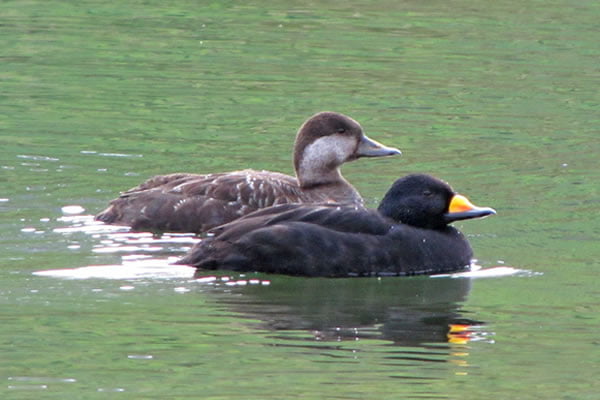Population Delineation, Migratory Connectivity and Habitat Use of Atlantic Scoters: Black Scoters

Project Number: 117
Year Funded: 2009
Lead Institution(s): Canadian Wildlife Service
Project Lead: Scott Gilliland
Collaborator(s): Keith McAloney (CWS)
Location: Atlantic Flyway
Focal Species: Black Scoter (Melanitta americana)
Project Description: Up to 2007, only 34 Black and 27 Surf Scoters had been marked with PTTs in eastern North America. These birds provided the first insights into the migratory movements of eastern North American scoters. In 2009, we marked an additional 20 females; however, sample sizes must be increased to improve our understanding of the movements and affiliations for these populations. For example, of the females that have been tracked from wintering and spring staging sites along the Atlantic Coast, a large proportion have moved to breed in the central boreal forest, which is outside the known breeding range for Black Scoters and thought just to support breeding Surf and White-winged Scoters. This has implications for delineation of the eastern and western populations of Black Scoters, for interpreting the results of the May breeding pair surveys which the scoters are not be speciated during, and for the design of future breeding surveys for sea ducks. Our objective was to tag 35 adult Black Scoters with satellite tags to assist in defining the distribution of Black Scoters on their breeding and molting areas.
Project Reports:
